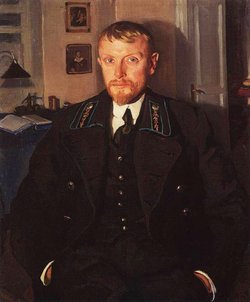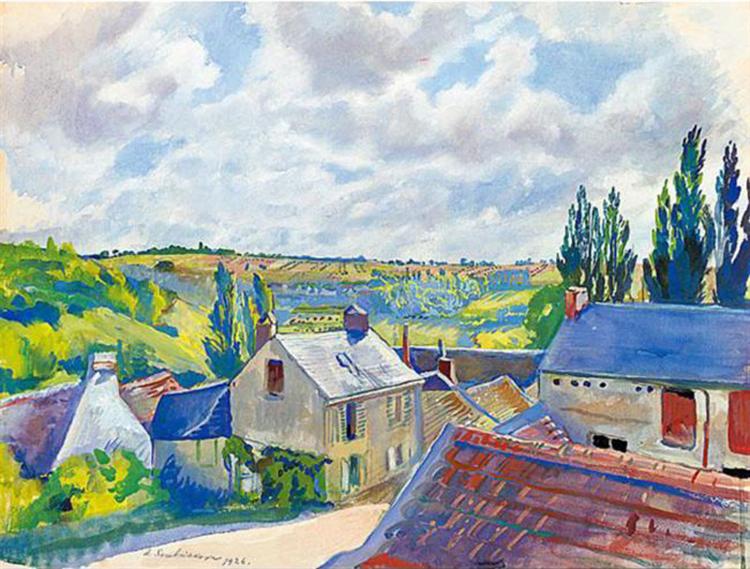




About the Artist
Master’s Palette
Reveal the unique color story behind each piece, helping you delve into the artistic essence, and spark boundless inspiration and imagination.

Bring the captivating colors to your project. Click to copy!
Artwork Story
In 1909, when she was just 25, Zinaida Serebriakova painted what would quietly become one of Russia’s most cherished self-portraits. Self-Portrait at the Dressing Table doesn’t shout for attention, but it doesn’t need to. Over a century later, it still draws people in—not with drama or grandeur, but with a kind of quiet honesty that feels rare even today. It shows Serebriakova not as a distant genius, but as a young woman in her own space, comfortable, present, and unmistakably herself.
The setup is deceptively simple. She’s seated at her dressing table, arms raised mid-motion as she gathers up her thick brown hair. But there’s something magnetic in her expression. She looks out at us—not in search of praise, not even trying to impress—but with a direct, clear gaze that’s open and unguarded. There’s no performance here. It feels like we’ve caught a real moment, the kind that usually happens behind closed doors. Light filters softly through the room. Brushes, bottles, a mirror—these everyday objects aren’t just props. They’re part of her world, rendered with affection and a quiet sense of place.
Did you notice that why are the pearls on the vanity gray-green? Zinaida’s palette betrayed her—she painted her husband Boris’s wedding gift with oxidized tones, like the tarnished silverware in her family estate.

The Self-Portrait at the Dressing Table painting was finished at her family’s estate in Neskuchnoye, in the Kharkiv region. Serebriakova came from an artistic family—her grandfather was the sculptor Evgeny Lansere, and her uncle was Alexandre Benois, a founding member of the influential “World of Art” movement. Yet she carved her own place without relying on connections. She submitted the self-portrait to the 1910 Union of Russian Artists exhibition in St. Petersburg, and it was an instant sensation. Viewers were drawn not only to her technical skill, but to the freshness and sincerity that radiated from the canvas.
Serebriakova wasn’t trying to portray herself as a muse or a symbol—just as a person. She’s poised but not posed, beautiful but not idealized. At a time when women in art were often filtered through the eyes of men—objectified or moralized—Serebriakova’s painting is quietly radical. She offers us a version of herself that’s real, composed on her own terms. In that sense, the painting is more than a likeness—it’s a statement. A subtle but clear message: I am here, I see myself, and I choose how I am seen.
Zinaida Serebriakova’s marriage was marked by both warmth and hardship. She married Boris Serebriakov, a fellow art enthusiast who shared her creative spirit. Their bond was strong, a source of mutual support especially during turbulent times. Tragically, He succumbed to typhus contracted while imprisoned in a Bolshevik jail during the Russian Civil War. His death left Zinaida widowed with four children and no income, profoundly affecting her life and work . After her husband’s death in 1921, exiled in Paris, she wrote to her sister: “Parisian vanities are too small to hold my Russia.”

That’s probably why the Self-Portrait at the Dressing Table painting still resonates so deeply. It’s technically masterful, yes—but its real strength lies in its humanity. There’s nothing flashy or overstated. Just a young woman at her mirror, caught in a private moment that somehow feels universal. Viewers around the world continue to find in this image something familiar and comforting: a private moment, beautifully rendered, where art meets life without pretension.


 (c. 1380-1390)-full.webp)
-full.webp)
-full.webp)
-full.webp)
-full.webp)
-full.webp)